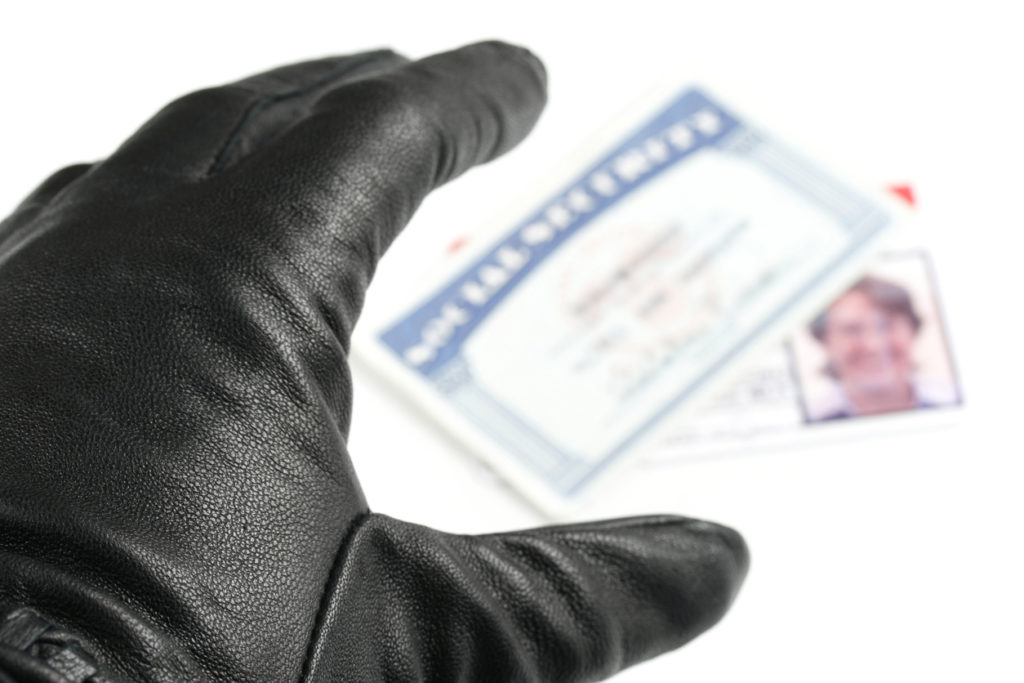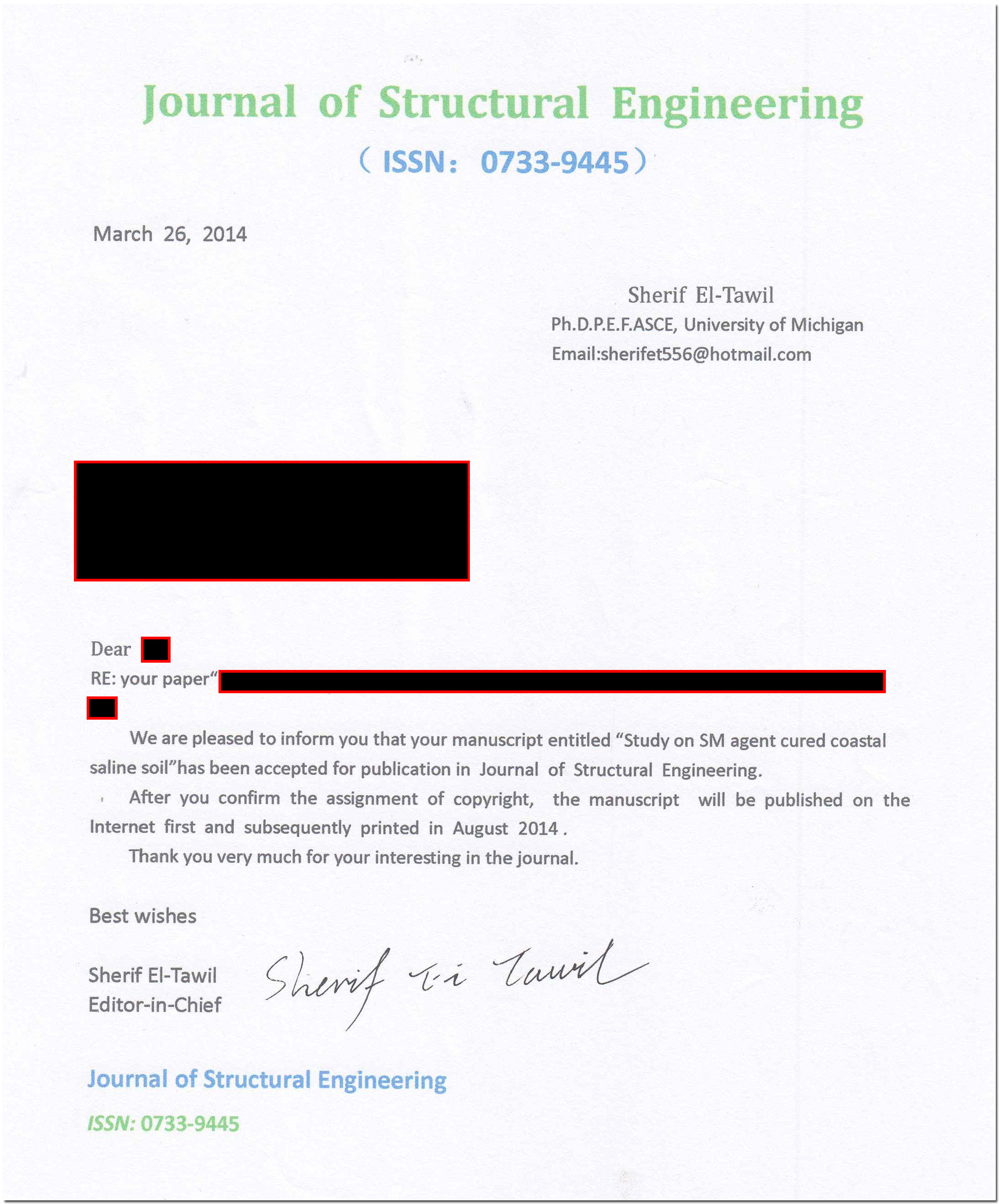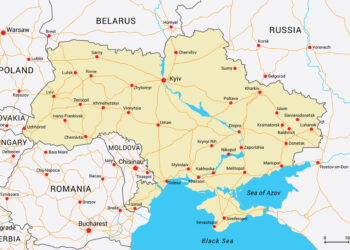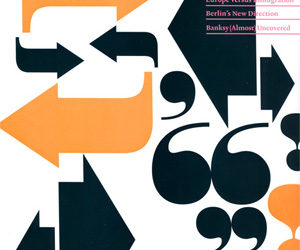“You can’t buy a good reputation; you must earn it.”—Harvey Mackay
Or, you can steal it.
Trust in the scholarly publishing community has been a hot topic recently. It was discussed at the recent STM Spring Conference, at the Council of Science Editors annual meeting, and in the Kitchen recently.

In all three settings, it was clear that some believe there is a trust issue between researchers and publishers, others disagree, some aren’t sure.
The entire peer review system is built on trust. Publishers trust that the authors actually did the work described in the paper. Authors trust that reviewers aren’t stealing their work out from under them. And authors trust that the publishers will perform all of the promised services in exchange for the right to resell the work.
The erosion of trust, if this erosion actually does exist in a widespread manner, stems from lots of changes in the traditional print model. The dissemination and discoverability of scholarly work online provides opportunities for bad actors to take advantage of the trust system (think fake emails for fake authors or cut-and-paste plagiarized text). Technology also makes fraud easier to detect (anti-plagiarism software, duplicate submission checking, etc.).
Another threat to the trust system comes from the so-called predatory publishers. The advent of open access (OA) journals with the author-pays model has provided a new and potentially profitable way for bad actors to take advantage of unknowing authors. These practices have, unfortunately, made researchers leery of anything new, particularly if it is OA.
There is a buyer beware element to all this but the issue becomes more complicated with sites that are mimicking reputable journals or services to intentionally confuse authors. Among the famed list of predatory journals, you will find journal titles that are incredibly similar to the title of an already existing journal. You will surely find the Aims & Scope to be identical. In some cases, the journal website is cloned to look identical.
So how can a researcher tell whether a journal is the real deal or a counterfeit? I suppose she would look for the marks of a reputable journal. Such marks might include indexing, known editor and stellar editorial board, possibly having an Impact Factor, and associations with known publishers and services.
I chose an engineering journal from Jeffrey Beall’s list of standalone journals to review. I am familiar enough with engineering journals that I should be able to spot some red flags. Looking at the International Journal of Modern Engineering Research (no link, because we don’t want to improve their search engine rankings), there are all sorts of badges of honor. There is a giant badge that states it has an Impact Factor of 1.227. I looked the journal up in the Journal Citation Report and as of 2012, it was not listed. Given that a subscription to the JCR costs thousands of dollars, it seems plausible that an author would not know how to access the JCR to verify this information.
Then there is a smaller badge stating that the journal has an “IC Value of 5.09.” Clicking on it pulls up a letter with letterhead from Index Copernicus International. This group has a list of “over 13,000 journals, including 1,200 from Poland” that is referred to on the site as an index database. There appears to be a point system but all of the journals I saw listed (you can’t search by title) had an IC Value but further stated that they were not actually indexed.
Moving on, the journal site claims that the journal is included in the American National Engineering Database—never heard of it. This database only allows you to search for journals or publishers by their unique database number. I have no idea how a user would know the number. No other links on this page work. Also, there is nothing really American about the spelling (British spelling noted) and grammar.
There are other dubious databases listed and a claim to be ISO 3297:2007 compliant, which just means that they use an ISSN.
Here we have a journal that is not being honest. I have wondered how an author would fall for this journal when I can smell fraud after a furious 5 minutes of Googling.
Then one of the ASCE Journal editors received this email:
 Almost everything about this letter is fake. The ISSN and journal title are real. The editor’s name is real; but, the email and his signature are not.
Almost everything about this letter is fake. The ISSN and journal title are real. The editor’s name is real; but, the email and his signature are not.
Obviously, the author has been deceived. Upon further communication, the author provided a screen shot of a memo he received. It was in Chinese so I had it translated. The memo basically offered a service to help authors get papers into our Journal of Structural Engineering and another society’s journal on a related topic. The memo instructed authors to submit only original papers in English to a specific email address. This service agency, which claimed to have a very longstanding relationship with ASCE, would submit the paper on the author’s behalf and would return a decision letter within 15-20 days. Additionally, if the paper is accepted, the author will receive a copy of the paper as it appears in the journal.
I can only assume that the author paid upfront for this service as I cannot fathom any other motivation. The author, likely embarrassed by being taken advantage of, is no longer responding to queries on the matter.
We have seen our journals used on conference websites as an enticement for attending or submitting a paper. Usually the claim is made that only select papers will be chosen for consideration and then after the conference we get an email with a zip file containing 10 papers. But never before have I seen a completely fake decision letter.
It’s gotta be hard to try to keep the lies up. It’s relatively easy to set up a bogus journal but getting people to submit and pay for it requires sophisticated levels of deception. This is where the counterfeit industry fills the gaps. In fact, Beall now has a list of misleading metrics with a dozen or so impostors to the Impact Factor, many of which will sell you a number if you want it.
It seems that a cottage industry that preys on author gullibility and publisher reputation has been born. Fake societies actually soliciting membership dues are being run out of virtual offices in Delaware. Nicely composed emails are being sent to editors by an Alison Mills (not her real name and not even her fake name) offering to bring the journal the “best of the best” papers from China. Unfortunately for dear Alison, follow up conversations via email are in very poor and broken English.
As an industry, how do we protect authors as well as the reputation and authority of the legitimate publishers, journals, and services?
It was suggested at the recent Council of Science Editors meeting that perhaps CSE or another organization should take over the work that Jeffrey Beall started. While a black-list approach seems unlikely, guidelines for authors on what to look for in a reputable journal would be a good start. A lot of time and money has gone into training and educating researchers from China and India on publishing best practices. Spotting fraud should be included.
Social/sharing networks should also be wary of journals listed on their sites. I found a call for papers for the above-mentioned International Journal of Modern and Engineering Research posted on a popular academic social network. Professional publishing societies such as CSE, SSP, and AAP, must review their policies regarding who is entitled to become a member. Legitimate membership organizations can no longer trust that a dues paying member is serving the community in good faith.
Sites like the Scholarly Kitchen and even Beall’s list are hosted on blog platforms that are blocked in mainland China and maybe even in some African countries. Authors and researchers are not getting this information and unfortunately, many people are being duped.
Discussion
15 Thoughts on "Identity Theft of the Scholarly Kind"
Cochran should have mentioned
http://citesandinsights.info/civ14i5.pdf
Why it is necessary to educate authors if each author with mediocre mental skills can make Crawford’s check??
So now, my question. I am not a researcher. But, I need to do some research. How do I know which journal is fake? Any tell-tale signs?
Dear Angela,
I do not really understand what you mean. You said: “Obviously, the author has been deceived. Upon further communication, the author provided a screen shot of a memo he received. It was in Chinese so I had it translated. The memo basically offered a service to help authors get papers into our Journal of Structural Engineering and another society’s journal on a related topic. The memo instructed authors to submit only original papers in English to a specific email address. This service agency, which claimed to have a very longstanding relationship with ASCE, would submit the paper on the author’s behalf and would return a decision letter within 15-20 days.” However there is already an acceptance letter. So what for is the service offered?
The acceptance letter was a fake, and did not come from the journal. The service charged the authors, the authors sent the article to the service, the service did not submit the article to the journal and instead sent back a fake letter of acceptance
And the agent claimed to have a relationship with us that did not exist. I do wonder how many people will contact us after the August issue is published wondering why their paper was not in the issue. I was not able to track the submission email or the name of the agency down on the Internet. There does not appear to be an organized website offering these services but rather some informal and non-traceable communication. We are preparing a cease and desist but really these fake agencies can do this with any journal.
The origin of JournalGuide (JournalGuide.com) was exactly this problem – that authors and readers need an objective and independent source of information in an ever more complex publishing environment. Finding a journal on the coverage list of a selective index is certainly important, but failing to find a journal on a list ends the trail. Similarly with the black-list approach – not finding a title on a black list doesn’t mean it is a reputable source. Ideally, all authors would have the assistance of advisors and colleagues, but the rapid globalization of scholarly communication (one of the unarguable benefits of electronic and OA publishing) means there are new members of the community that don’t have the kind of generational knowledge they need to avoid scams.
We began by collecting an extensive a list of titles, and the site can combine publisher-provided stats, industry and aggregator selection criteria, and author feedback to offer a rich set of data about as many journals as possible. JournalGuide is a free resource – and we have opened it up even as we continue developing the underlying data.
We’ve struggled with how to deal with so-called questionable journals…to exclude them from our site altogether, or to include them but use some kind of labeling system. We are now exploring whitelist criteria and hope to provide an official “Verified” status to titles in the near future. You can read more about our decision process and plans on a recent blog post (http://journalguide.wordpress.com/2014/05/15/whitelist-vs-blacklist/)
Great piece, Angela, thanks. One thought:
It’s gotta be hard to try to keep the lies up. It’s relatively easy to set up a bogus journal but getting people to submit and pay for it requires sophisticated levels of deception.
I think this is true, but it’s only a problem if you want to establish and maintain a fraudulent journal operation for the long term. Instead, what at least some of these outfits seem to be doing is establishing the operation, maintaining it for as long as they’re able to do so at reasonable expense, and then, when they’re exposed or threatened with exposure, simply shutting down and opening up again later under another corporate name. Keeping up the lies is only a problem if you try to keep them up. Saying “Hey, contribute to my nifty new OA journal — it’s going to be awesome!” is easy and cheap, whereas maintaining the trappings of awesomeness over time is expensive.
Very true. But it was seriously easy to figure out these were fraud, at least while sitting in the US with Google access to everything. This may not be the case for everyone. I wonder how many papers they need to make it worth their time? When I see a new site soliciting content that has 50 journals with no content, clearly this is a problem. And then, when I see some that have a few papers, I wonder if they are real papers or just fakes trying to make the journal seem more legit! Seems like a lot of work to me.
That’s true — and it makes me wonder if someone out there is providing Potemkin-village-style templates to those who want to set up a fake journal-publishing storefront quickly and easily. If you could buy an off-the-shelf package that looks reasonably legit, then send out a big batch of spammy solicitations (or pay a service provider to do it for you), then sit back and wait for the submissions and APCs to roll in, I can see how this might work. Then you send out pro forma automated replies to the authors telling them that they should see their papers formally published in the “journal” within 90 days, you cash the checks, you wait 120 days (or until the queries from impatient authors start coming in), take down your website, and start all over. If the APC take is great enough, that could work out quite well without too much effort. Maybe you could even run 5 or 10 such operations simultaneously, if your target market is a very large academic population that is under severe pressure to publish and that is minimally worried about anyone going through their CVs with a thorough and critical eye.
I don’t know for sure whether this is what’s happening in any particular case, but it seems plausible, scalable, and reasonably sustainable — and if I thought it up in a couple of minutes, I’m sure someone smarter and more resourceful than I could come up with something much cleverer given a week or so.
I need to frame my response in different ways. First I’ll put on my “Journals Publisher/Society” hat.
Unfortunately I’ve had very similar experiences to what Angela describes. At a previous employer I had oversight of journals operations. When the “predatory” journal trend started I did not think it would ever become a serious problem as I couldn’t believe anyone would ever fall for what seemed to be such obvious fraud. I was wrong. The problem is just getting worse as pressures to publish increase along with outlets to publish (both legitimate & otherwise). The scams are becoming more elaborate. I’ve had to deal with “journals” which put up websites with the exact title of our journals; not even the typical “International Journal of” which usually adds some level of differentiation. Others took copyrighted material, changed the titles and author lists and posted them as their own. Dealing with these took up a lot of resources, not the least of which was the time of staff and of course, our legal representation. Like Angela, we discovered some of these hoaxes when authors, who had paid fees to someone (not us), contacted us asking when their article would be published. It was upsetting for the authors, but for us as publishers as well, because our name was being used in an unethical and illegal manner. It was also very negative for authors who had their names associated with articles they’d never written for “journals” they’d never heard of.
Second hat now placed on my head; that of founder and Managing Director of PRE (Peer Review Evaluation, providers of PRE-val & PRE-score).
Like JournalGuide, it’s situations like these, along with other factors, which serve as the motivation behind what we’re doing with PRE. Our primary goal is to support publishers and journals who conduct legitimate peer review and we want to increase the level of trust and transparency around that process. As Angela mentions, anyone can create a web page and display various logos and metrics. What’s stopping someone from saying they have an IF? From saying they’re a member of COPE? Saying a journal screens for plagiarism? Currently, nothing. And now fake metrics etc. are popping up. Journals that participate in PRE-val will have the ability to to work with us to validate (Get it? PRE-val = Peer Review VALidation!) not just their peer review process but other best practices that show real commitment to their publishing operations. I don’t want to use the SK for a sales pitch, so I’ll stop there. The main point is that there are initiatives evolving to combat those who are giving all journal publishers a black eye and making life difficult for our academic community. The sooner everyone gets involved and supports efforts such as JournalGuide, PRE-val and others the better it will be for all of us.
I now remove the virtual hats from my head and step off my virtual soapbox.
I can see where the letter from the journal accepting the paper would be very useful for someone seeking a promotion/grant etc. So, not necesssarily all authors using these agencies are being scammed. Will a university administrator in China say be able to tell that the letter is a fake?
That is a good point and we were a bit suspicious about the whole thing. That said, the decision letter promises a publication date so I would think that a tenure board would want some sort of proof. Our real decision letters are a pretty boring looking email with no journal logo or editor signature.
Sites like the Scholarly Kitchen and even Beall’s list are hosted on blog platforms that are blocked in mainland China and maybe even in some African countries.
SK does not appear to be blocked in China.
Excellent. Thank you for that link. I am learning more about this. Apparently WordPress sites hosted on sites that are not affiliated with WordPress may be visible. We have other WordPress sites that are not.
This tester looks to be a good complement to the ViewDNS poisoning checker, as it provides the actual HTTP header received and a traceroute.





